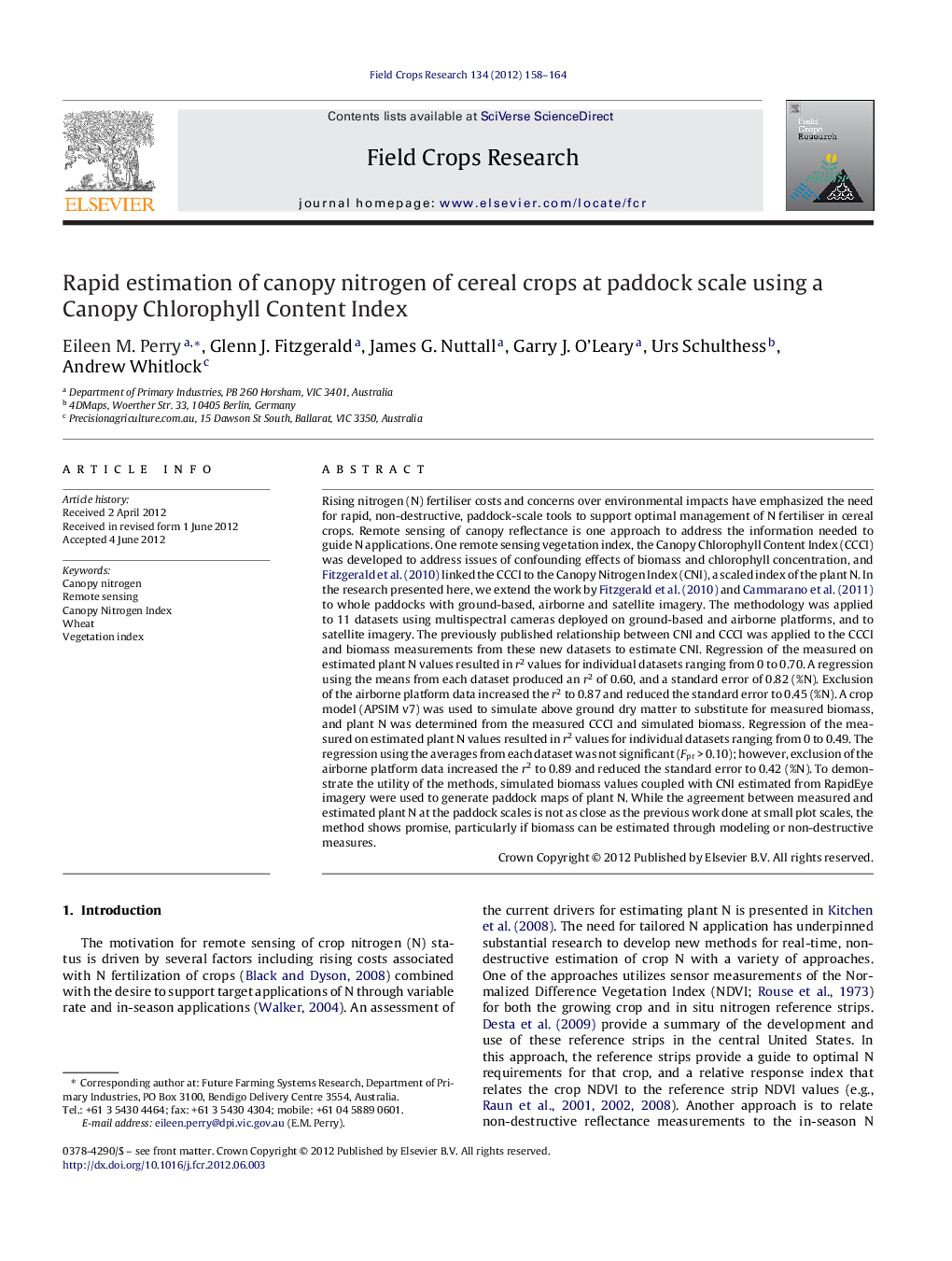| کد مقاله | کد نشریه | سال انتشار | مقاله انگلیسی | نسخه تمام متن |
|---|---|---|---|---|
| 4510367 | 1624729 | 2012 | 7 صفحه PDF | دانلود رایگان |

Rising nitrogen (N) fertiliser costs and concerns over environmental impacts have emphasized the need for rapid, non-destructive, paddock-scale tools to support optimal management of N fertiliser in cereal crops. Remote sensing of canopy reflectance is one approach to address the information needed to guide N applications. One remote sensing vegetation index, the Canopy Chlorophyll Content Index (CCCI) was developed to address issues of confounding effects of biomass and chlorophyll concentration, and Fitzgerald et al. (2010) linked the CCCI to the Canopy Nitrogen Index (CNI), a scaled index of the plant N. In the research presented here, we extend the work by Fitzgerald et al. (2010) and Cammarano et al. (2011) to whole paddocks with ground-based, airborne and satellite imagery. The methodology was applied to 11 datasets using multispectral cameras deployed on ground-based and airborne platforms, and to satellite imagery. The previously published relationship between CNI and CCCI was applied to the CCCI and biomass measurements from these new datasets to estimate CNI. Regression of the measured on estimated plant N values resulted in r2 values for individual datasets ranging from 0 to 0.70. A regression using the means from each dataset produced an r2 of 0.60, and a standard error of 0.82 (%N). Exclusion of the airborne platform data increased the r2 to 0.87 and reduced the standard error to 0.45 (%N). A crop model (APSIM v7) was used to simulate above ground dry matter to substitute for measured biomass, and plant N was determined from the measured CCCI and simulated biomass. Regression of the measured on estimated plant N values resulted in r2 values for individual datasets ranging from 0 to 0.49. The regression using the averages from each dataset was not significant (Fpr > 0.10); however, exclusion of the airborne platform data increased the r2 to 0.89 and reduced the standard error to 0.42 (%N). To demonstrate the utility of the methods, simulated biomass values coupled with CNI estimated from RapidEye imagery were used to generate paddock maps of plant N. While the agreement between measured and estimated plant N at the paddock scales is not as close as the previous work done at small plot scales, the method shows promise, particularly if biomass can be estimated through modeling or non-destructive measures.
Journal: Field Crops Research - Volume 134, 12 August 2012, Pages 158–164